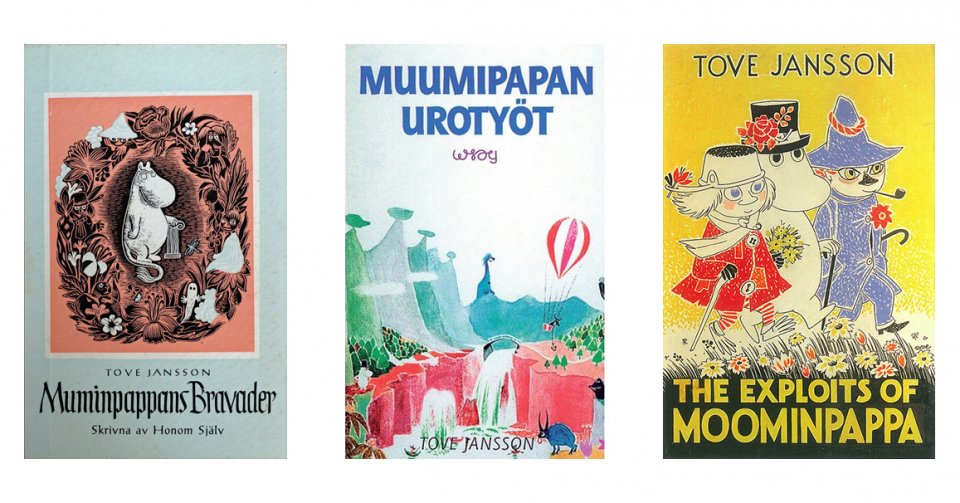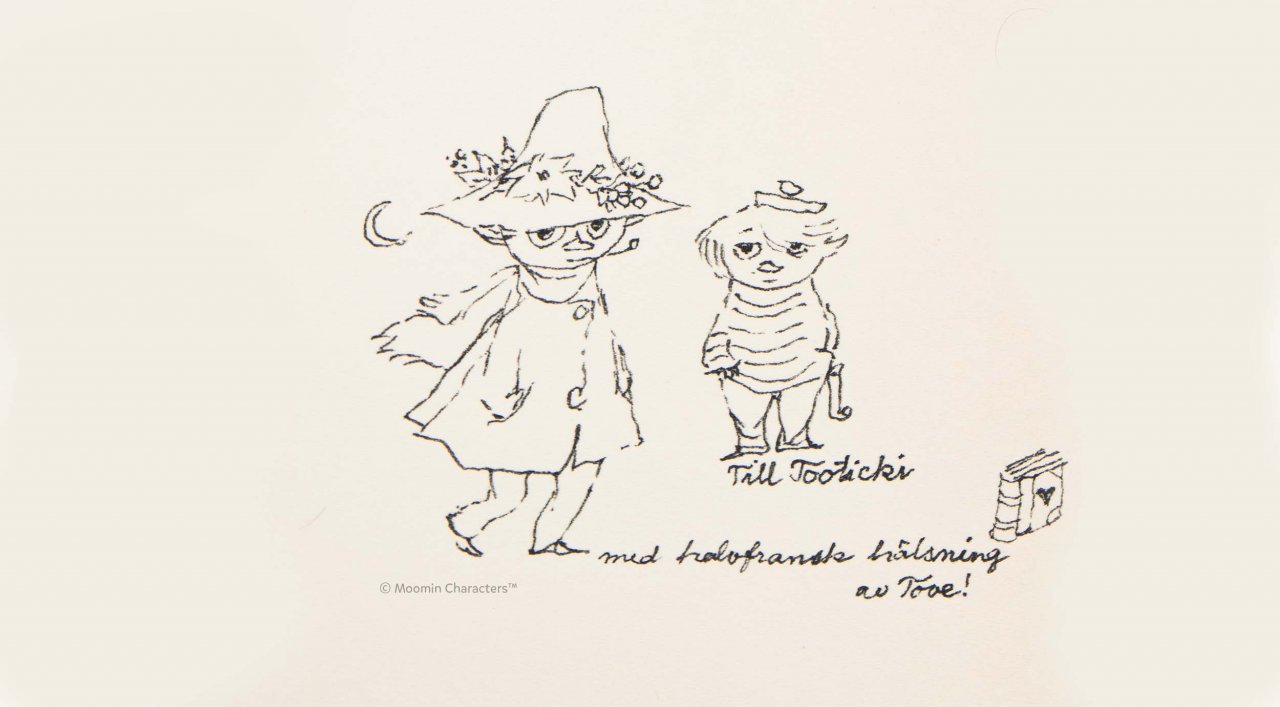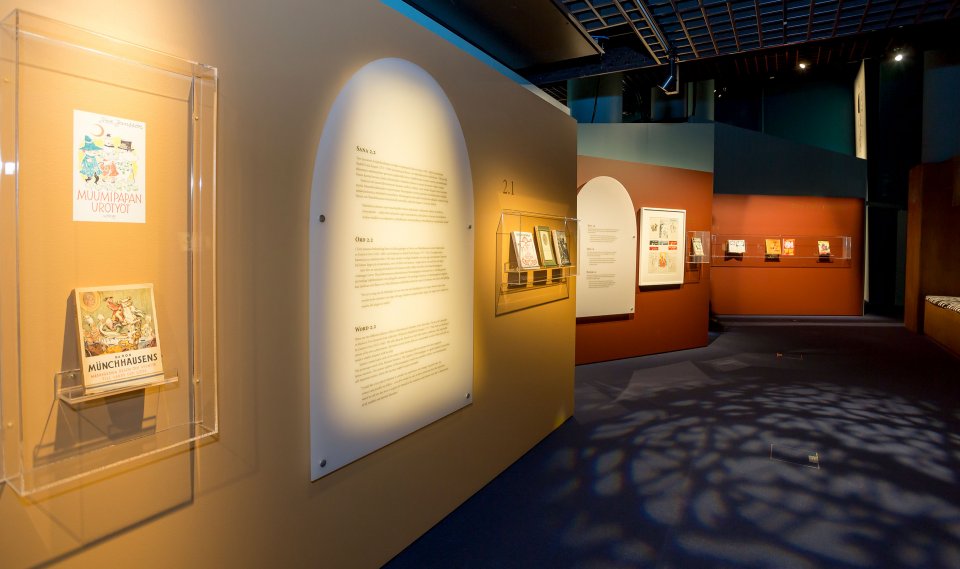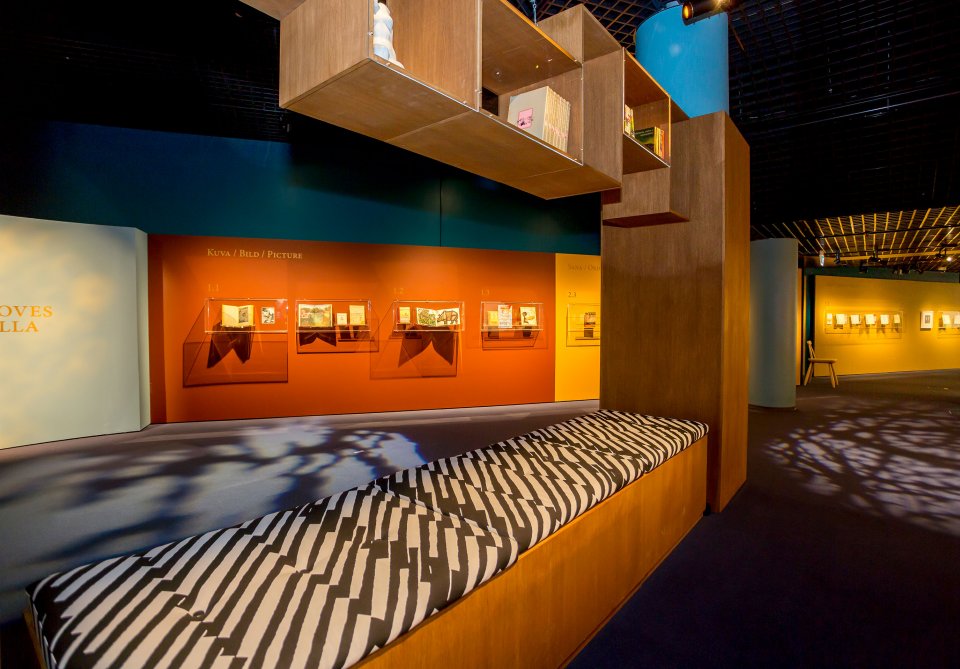The exhibition From Tove's Bookshelf shows what Tove Jansson read. Many first editions of Moomin books with personal dedications and other rarities from Jansson's bookshelves are also displayed here.
The exhibition From Tove’s Bookshelf shows the creator of the Moomins as a reader.
“Tove Jansson was a curious reader, a real bookworm. She read a lot and was interested in many topics. She read without prejudice, including a lot of international literature about different cultures “, says Riikka Kuittinen, curator of the exhibition From Tove’s bookshelf at the Moomin Museum.
Did the wild adventures of the baron inspire The Memoirs of Moominpappa?
Jansson also read books from previous centuries. Kuittinen mentions the book Baron Munchausen’s Narrative of his Marvellous Travels, which according to her is in many ways reminiscent of the Moomin novel The Memoirs Of Moominpappa.
“It is a wild, exaggerated heroic story originally from the 18th Century, in which the baron himself writes down his memoirs. The events in the book are quite wild; he flies to the moon shot from a cannon and also goes to Mars. It is a very similar form of male boasting as in The Memoirs of Moominpappa. I have placed them next to each other in the exhibition. One can speculate whether the baron’s adventures may have inspired The Memoirs Of Moominpappa. It’s a forgotten tale. I hope that this exhibition could inspire people to also read older children’s literature “, says Kuittinen.
Tove Jansson’s family is present in touching dedications
Does the exhibition show something that is especially interesting for Moomin fans?
“The first thing that springs to mind are the dedications, which are often illustrated. They are unique images, which have not been shown anywhere before. They are illustrations that are intended as gifts, and they have not been printed anywhere,” Kuittinen explains.
She especially wants to highlight a dedication in the first French edition of the Moomin novel Moominland Midwinter, which Tove drew for her life partner Tuulikki Pietilä.
The drawing depicts Snufkin and Too-ticky, who is often said to have been inspired by Tuulikki Pietilä. Next to the picture, Jansson has written a line to her beloved, which she jokingly calls by the fairy tale character’s name “A half-French greeting to Too-ticky”.
A sign of peace in a strained father-daughter relationship
Kuittinen also wants to highlight another book, in which Tove Jansson has written a dedication to an important family member. She has dedicated a copy of the first edition of The Moomins and the Great Flood to her father, the sculptor Viktor Jansson. The author has signed the dedication with the nickname she had in the family – Noppe. Kuittinen sees the dedication as a gesture of peace in a father-daughter relationship that was often rather stormy.
“It’s a wonderful gift to her father. On the same page there is also an ex libris designed by Tove’s mother Ham. On these book pages, Tove’s family is present in a wonderful way ”.
As always, the Moomin Museum also offers programs related to the exhibition in its studio space. During ex libris workshops, visitors can make their own ex libris, marks to attach to their books to show who owns them.

The oldest book is probably Tove’s mother’s
The oldest book in the exhibition From Tove’s Bookshelf is Zacharias Topelius’ Sånger from the 1860s, while the newest books are from the 1980s.
The exhibition also presents children’s books from the beginning of the 20th century.
“We do not know for sure, but we suspect that Sånger is Tove’s mother Ham’s old book,” says Kuittinen.
“This exhibition also shows the development of printing techniques and the art of illustration,” she says. The cover of Topelius’ book is very simple, and has no illustrations. The dark red cover is simply adorned with the book’s title printed in golden letters.
“It is stylistically very different compared to e.g. covers from the 1970s, which are full of colour and images. The contrast to the newer books with their wild covers is striking. Tove herself was involved in that development and change”, says Kuittinen.
Jansson was interested in the work of her colleagues
In the exhibition, you can follow the art of illustration through an entire century. The development of printing technology gave the illustrators new means of expression, and Tove Jansson was a creative pioneer in the field. According to Kuittinen, it shows how interested Tove Jansson was in the development of her own industry.
“She read a lot of literature about the industry, such as biographies of children’s book authors and illustrators – the collection contains e.g. biographies of Elsa Beskow and John Bauer. She studied her own industry intensely.”
An exhibition for bookworms
The exhibition From Tove’s Bookshelf is made in collaboration with the Children’s Book Institute. The Children’s Book Institute is a national expert institute for children’s and young people’s literature that has been active in Tampere since 1978. The Children’s Book Institute runs Finland’s only special library for children’s and young adult literature.
“The Moomin Museum is a museum based on books. I hope that many book lovers will find their way here, as this is an exhibition that should appeal to bookworms,” says Riikka Kuittinen.

The shadow of war in the first Moomin story – watch the mini documentary
How much has the war influenced Tove Jansson’s first Moomin story? And what can it teach us on how family can also be chosen?

Moomin and Tove Jansson exhibitions worldwide
Why not head to a Moomin exhibition on a rainy day – here are the most interesting Moomin and Tove Jansson exhibitions around!

Introduction to Moomin books: The Exploits of Moominpappa, 1950
The Exploits of Moominpappa (original title in Swedish: Muminpappas bravader) is a book about Moominpappa.



